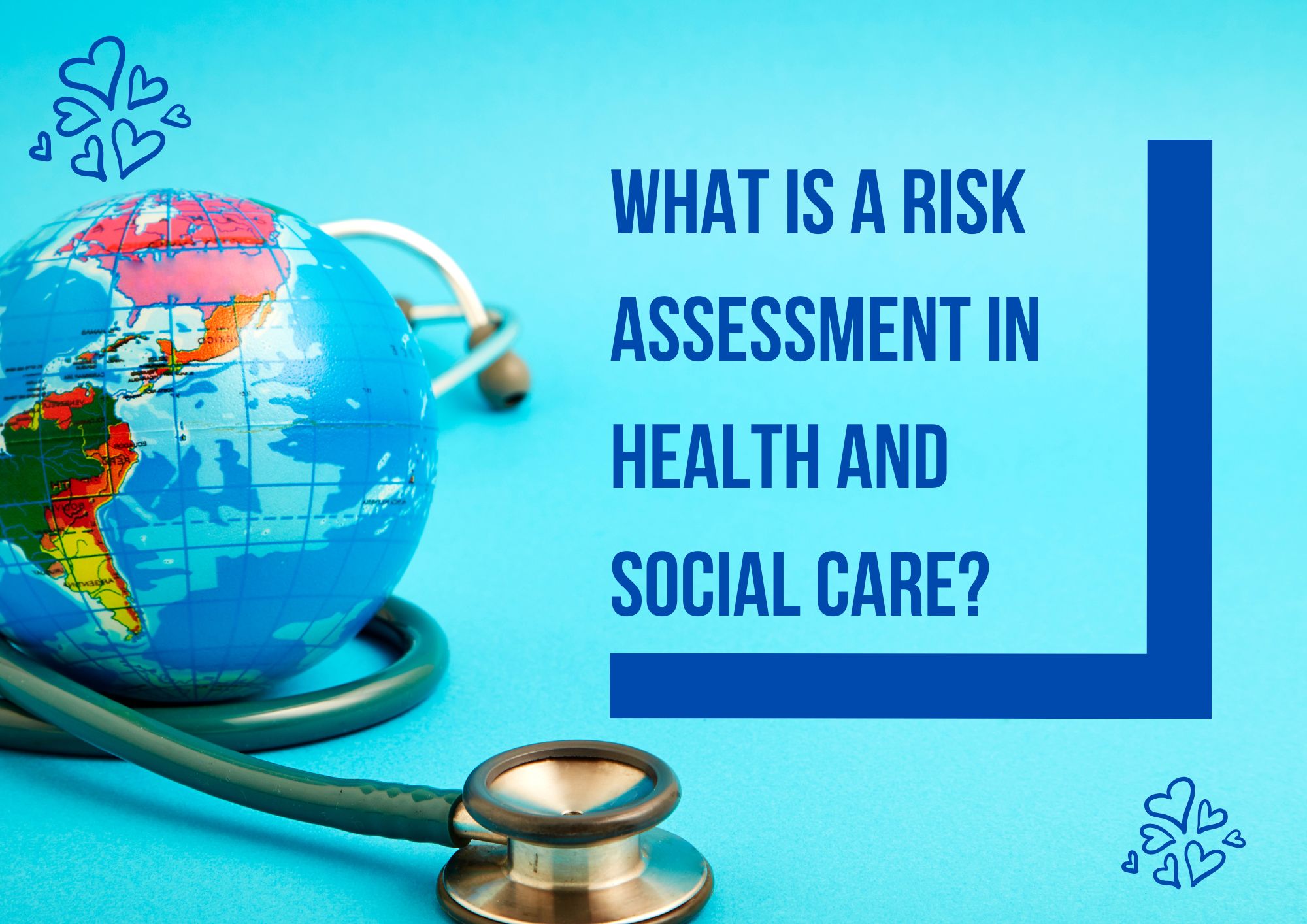Introduction
Risk assessment in health and social care is a critical process aimed at ensuring the safety, well-being, and quality of care for patients, caregivers, and healthcare professionals. Because healthcare environments are dynamic and patients are vulnerable, a systematic approach to risk identification, assessment, and mitigation is required.
This article offers a thorough overview of risk assessment in the healthcare industry, including its significance, essential procedures, categories, practical applications, and implementation tactics to establish a secure and efficient healthcare setting.
Understanding Risk Assessment in Health and Social Care
The methodical process of identifying possible risks, assessing their implications, and putting preventative measures in place is known as risk assessment. This guarantees that when receiving and providing care services, patients and employees are shielded from preventable damage.
Why is Risk Assessment Important?
- Protects Patients and Employees: Lowers the likelihood of infections, accidents, and other health hazards.
- Improves Service Quality: Assures that medical institutions respect strict safety regulations.
- Legal Compliance: Fulfills the legal and regulatory standards for patient care.
- Gets better Efficiency: Prevents disruptions by taking proactive measures to mitigate problems before they become more serious.
Risk assessments in health and social care settings are ongoing processes that adapt to new challenges and changing patient needs.
Types of Risk Assessment in Health and Social Care
Risk assessments vary based on settings, situations, and patient groups. Here are some key types:
1. Generic Risk Assessment
A broad assessment covering common risks across healthcare environments, such as:
- Slips, trips, and falls prevention
- Handling of hazardous substances
- Fire safety measures
2. Individual Risk Assessment
Focuses on the specific needs and conditions of a patient, including:
- Mobility issues (fall risks) for elderly patients
- Allergy risks related to medications
- Mental health concerns requiring special care
3. Dynamic Risk Assessment
An ongoing process where healthcare professionals assess evolving risks in real-time. Example:
- Emergency medical interventions where immediate decisions are required
4. Specific Risk Assessment
Addresses targeted risks such as:
- Infection control procedures
- Equipment handling in surgeries
- Chemical exposure in medical laboratories
Each type of risk assessment helps in tailoring safety measures to different patient groups and healthcare environments.
Examples of Risk Assessment in Healthcare
Practical risk assessment examples demonstrate its real-world applications:
- Hospital Safety Procedures
- Ensuring proper sanitation to prevent infections.
- Safe storage and disposal of hazardous waste.
- Care Homes and Assisted Living Facilities
- Fall prevention measures like handrails and non-slip flooring.
- Mental health monitoring for residents with dementia.
- Mental Health and Social Care Settings
- Identifying self-harm risks and ensuring secure environments.
- Preventing workplace stress and burnout among caregivers.
- Home Healthcare Services
- Safe handling of medications for chronically ill patients.
- Ensuring proper nutrition and hygiene for homebound individuals.
These examples highlight how risk assessments enhance patient safety and improve healthcare service efficiency.
Risk Assessment in Nursing and Care Homes
Nursing and care homes require specialized risk assessments due to the vulnerable nature of residents.
Common Risks in Care Homes:
- Falls and Accidents: Many elderly patients are at high risk of falling, requiring mobility aids and staff supervision.
- Medication Mismanagement: Errors in administering medication can have serious health consequences.
- Mental Health Risks: Depression and loneliness in elderly individuals must be proactively addressed.
- Fire Safety: Emergency evacuation plans should be regularly tested.
Effective risk assessment in care homes ensures residents receive safe, dignified, and high-quality care.
Key Steps in Conducting a Risk Assessment
A structured risk assessment plan follows these essential steps:
- Identifying Hazards
- Analyzing physical, chemical, biological, and environmental hazards.
- Assessing potential risks associated with patient mobility, equipment, and medication.
- Assessing Who is at Risk
- Identifying patients, staff, and visitors who could be affected.
- Considering pre-existing medical conditions that increase vulnerability.
- Evaluating the Risk and Implementing Control Measures
- Determining the likelihood and severity of each risk.
- Implementing control measures such as protective equipment, staff training, and improved policies.
- Recording and Documenting Findings
- Maintaining detailed reports on identified risks and actions taken.
- Ensuring compliance with health and safety laws.
- Reviewing and Updating Risk Assessments Regularly
- Conducting periodic reassessments to accommodate new challenges.
- Adapting risk assessment plans to changing healthcare regulations.
Following these steps ensures continuous risk mitigation and patient safety enhancement.
Common Risks in Health and Social Care
Several risks are frequently encountered in healthcare settings, including:
- Problems with infection control: Polluted surroundings that cause illness epidemics.
- Aggression or threats directed at healthcare professionals constitute workplace violence.
- Inadequate supervision or a lack of mobility assistance might result in patient falls and injuries.
- Burnout among healthcare workers is a stressor and a mental health issue.
Proper risk assessment reduces these hazards and creates a safe and effective care environment.
How to Implement an Effective Risk Assessment Plan
1. Staff Training and Awareness
- Conduct workshops on risk management.
- Train staff to recognize and report hazards.
2. Use of Technology for Risk Monitoring
- Early risk detection with digital patient monitoring systems.
- Predictive analysis powered by AI to enhance healthcare safety.
3. Regular Audits and Compliance Checks
- Make sure that the legal safety requirements are followed.
- Review risk management procedures frequently.
Effective risk assessment ensures proactive healthcare safety management.
Conclusion
In health and social care, risk assessment is essential to guaranteeing the safety of both patients and employees. Healthcare professionals can establish a safe and effective workplace for everyone by being aware of the many forms of risk assessments, typical risks, and prevention techniques.
Healthcare organizations can lower risks, provide higher-quality care, and adhere to industry standards by putting proactive risk assessment procedures into place.
Better patient outcomes, safer healthcare facilities, and an enhanced healthcare experience are all results of a well-thought-out risk assessment strategy.







